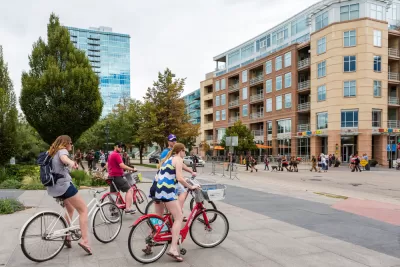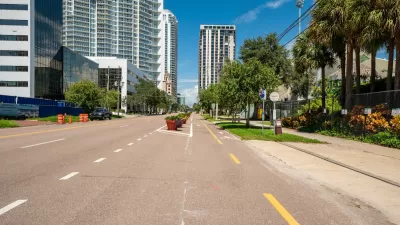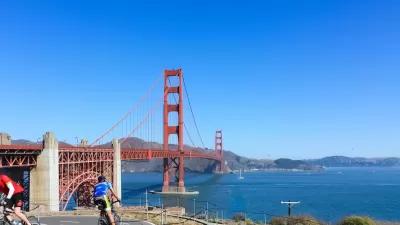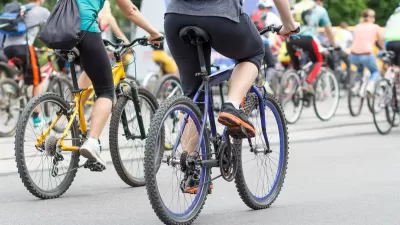In addition to reducing air pollution and congestion, improving bike infrastructure could save thousands of lives each year, according to new research.

A new study that models the "comprehensive global public health impacts of the mode shift to cycling" found that replacing car trips with bike trips can prevent over 15,000 deaths per year in the U.S. alone, reports Kea Wilson for Streetsblog.
The study analyzed rates of premature deaths due to car crashes and pollution-related disease, as well as how many car trips could be replaced with robust investment in bike infrastructure and other incentives.
Even if just 8 percent of those new bike trips replaced journeys in a car — an extraordinarily conservative estimate, considering that in this hypothetical world, every urban area in the world would be outfitted with Amsterdam-levels of bike lanes — researchers say that 18,589 lives could be saved across the globe, 1,227 of which would be in the U.S. alone.
Meanwhile, even people not using bikes would benefit from improved air quality, reduced congestion, and better overall mobility. "In addition to the impacts modeled in his study, [study author David] Rojas points out that bikeable communities typically have more green space, more real estate to devote to affordable housing, healthy food providers, and other essential services in every neighborhood, and lower levels of noise pollution, all of which have an impact on the physical and mental health of their residents."
FULL STORY: STUDY: Better Bike Policy Could Prevent 15K U.S. Deaths Every Year — And Not Just in Crashes

Study: Maui’s Plan to Convert Vacation Rentals to Long-Term Housing Could Cause Nearly $1 Billion Economic Loss
The plan would reduce visitor accommodation by 25,% resulting in 1,900 jobs lost.

Placekeeping: Setting a New Precedent for City Planners
How a preservation-based approach to redevelopment and urban design can prevent displacement and honor legacy communities.

Using Old Oil and Gas Wells for Green Energy Storage
Penn State researchers have found that repurposing abandoned oil and gas wells for geothermal-assisted compressed-air energy storage can boost efficiency, reduce environmental risks, and support clean energy and job transitions.

Homeowners Blame PG&E for Delays in ADU Permits
The utility says it has dramatically reduced its backlog, but applicants say they still face months-long delays for approvals for new electrical work.

Rethinking Wildfire Defense: How a Landscape Approach Can Protect Neighborhoods
Post-fire analysis of the Eaton Fire reveals that a landscape approach — including fire-resistant vegetation, home hardening, and strategic planning — can help reduce wildfire risk, challenging assumptions that trees and plants are primary fire hazards.

Scientists Studying Artificial Reefs as Flood Mitigation in Great Lakes
Artificial reefs could offer a ‘softer’ flood management and erosion solution that doesn’t disrupt the flow of sediment.
Urban Design for Planners 1: Software Tools
This six-course series explores essential urban design concepts using open source software and equips planners with the tools they need to participate fully in the urban design process.
Planning for Universal Design
Learn the tools for implementing Universal Design in planning regulations.
Borough of Carlisle
Caltrans
Heyer Gruel & Associates PA
Institute for Housing and Urban Development Studies (IHS)
City of Grandview
Harvard GSD Executive Education
Salt Lake City
NYU Wagner Graduate School of Public Service
City of Cambridge, Maryland





























